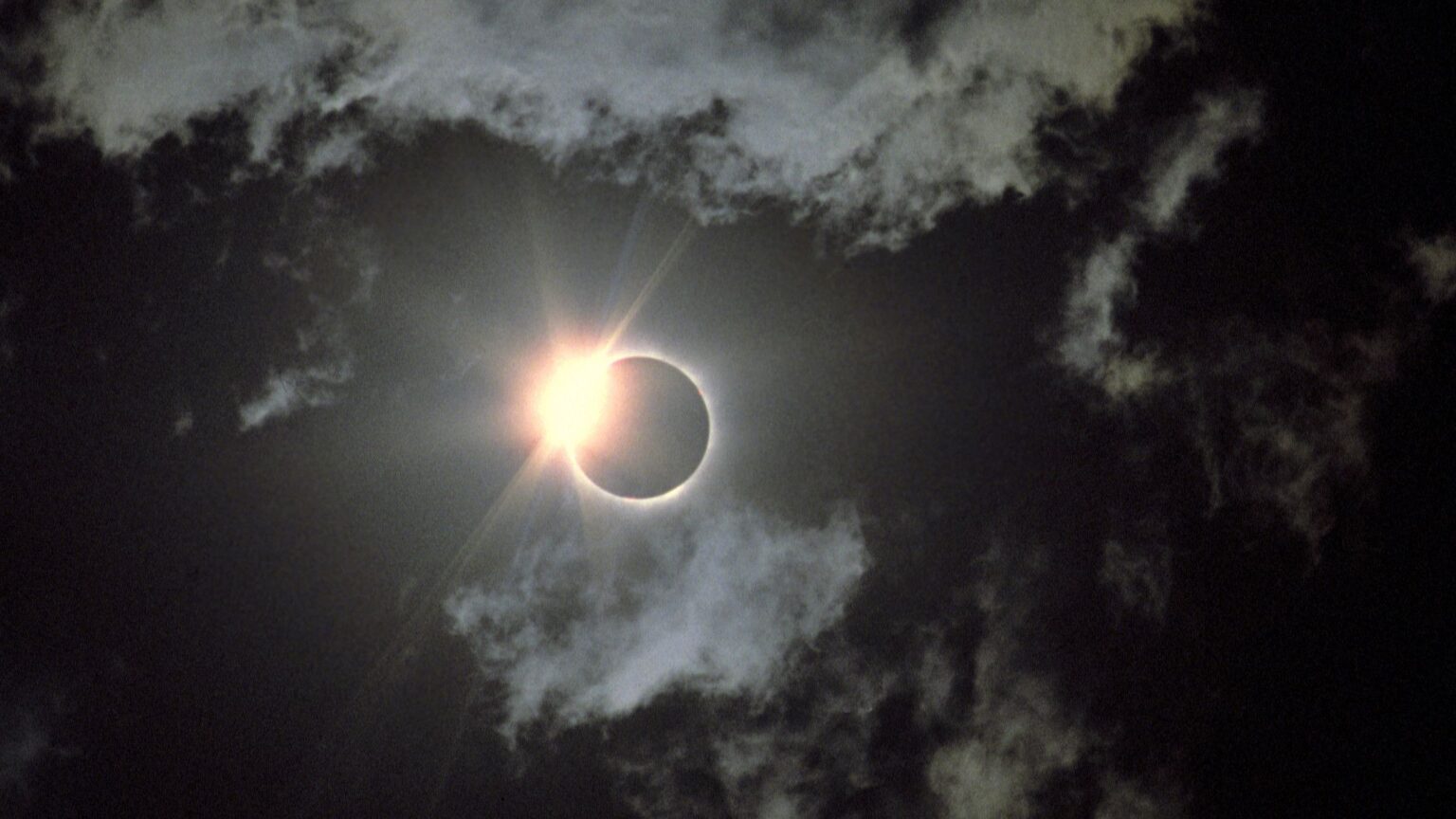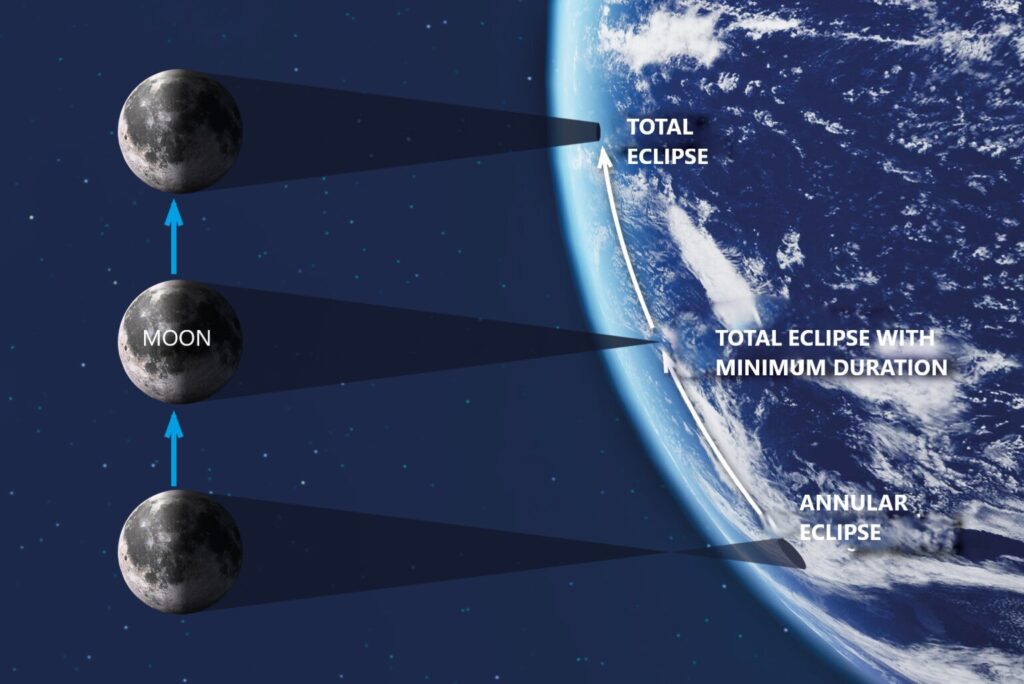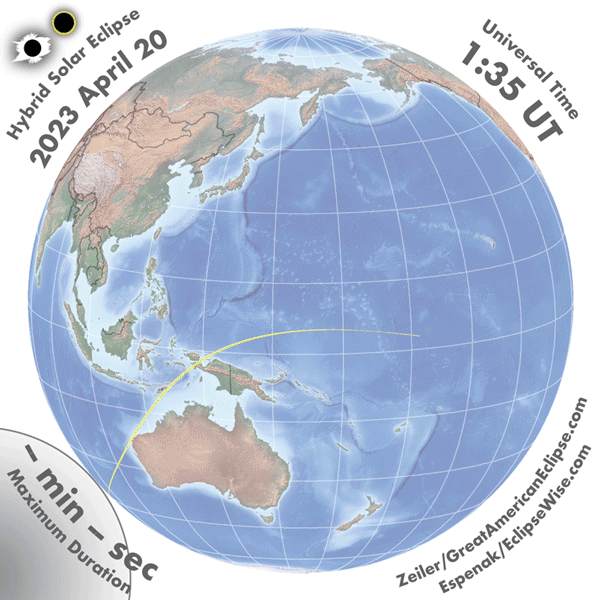If someone could be on the morning of April 20, 2023 in the south of the Indian Ocean, 350 km west of the Kerguelen archipelago, he or she would see a very unusual sun rise. Instead of the bright disk of our luminary, a thin shining ring would appear above the horizon, which would soon turn into a thin sickle. This would be the very beginning of a rare annular total solar eclipse.
The singularity of this eclipse lies in the fact that, starting as an annular one, it will turn into a total one at a certain point in the central phase band, and starting from this point the Sun’s disk will completely hide behind the Moon for a few seconds, and observers will be able to see the solar corona. Similar phenomena are called hybrid or annular-total eclipses. The change in type as the shadow of our natural moon moves forward is due to the fact that the Earth has a spherical shape. The edge of the “Earth disk” is located at a greater distance from the Sun and Moon than its central part (in the extreme case, the distance difference is equal to the Earth’s radius), therefore, at the ends of the central phase band, the cone of the lunar shadow “does not reach” the earth’s surface, and we see an annular eclipse, and closer to the middle it crosses it, and for everyone who is inside this cone, the Moon completely obscures our luminary.

Obviously, such a configuration requires very precise observance of distances: the distance of the Sun from the Earth should be exactly as many times greater than the distance of the Moon, as much as the solar diameter is larger than the lunar one (with an accuracy of a thousandth of a fraction). And it’s clear that this doesn’t happen very often. In fact, for 18 years and 11 days — a cycle of repetition of solar and lunar eclipses with similar parameters, which is called saros — this happens only twice. The current eclipse is a “return” through one saros of the phenomenon. It took place on April 8, 2005 (it was already April 9 in the Eastern Hemisphere at that time). After that, there was only one eclipse of this type — on November 3, 2013. It will be repeated on November 14, 2031.

On April 20, the moon’s shadow will pass over the eastern Indian and western Pacific Oceans. Almost along the entire length of its path, the eclipse will be total, the longest duration (1 minute 16 seconds) it will reach in the area of the island of Timor. Also, the band of the central phase will cross the Indonesian part of the island of New Guinea. But before that, it will “visit” the extreme northwestern point of Australia and open a whole series of total eclipses that will be visible from the territory of this continent. The nearest of them is expected on July 22, 2028, the next one will happen on November 25, 2030, and then there will be as many as two with a one-and-a-half-year break — July 13, 2037 and December 26, 2038.

Partial phases of the eclipse on April 20, 2023 can be seen throughout Australia and Indonesia, the Philippines and the North Island of New Zealand, parts of the Indochina Peninsula, southern Japan and southeast China. Also, the Australian and New Zealand sectors of Antarctica will fall into the visibility zone.
Interestingly, every 19 years the same lunar phases occur on the same days of the year. This period is called the “Metonic cycle“. Sometimes eclipses are repeated with this period, but their circumstances and visibility zones are very different. After two such cycles — on April 20, 2061 — after a 100-year break, we will finally be able to see a total solar eclipse from the territory of Ukraine.
Follow us on Twitter to get the most interesting space news in time
https://twitter.com/ust_magazine

